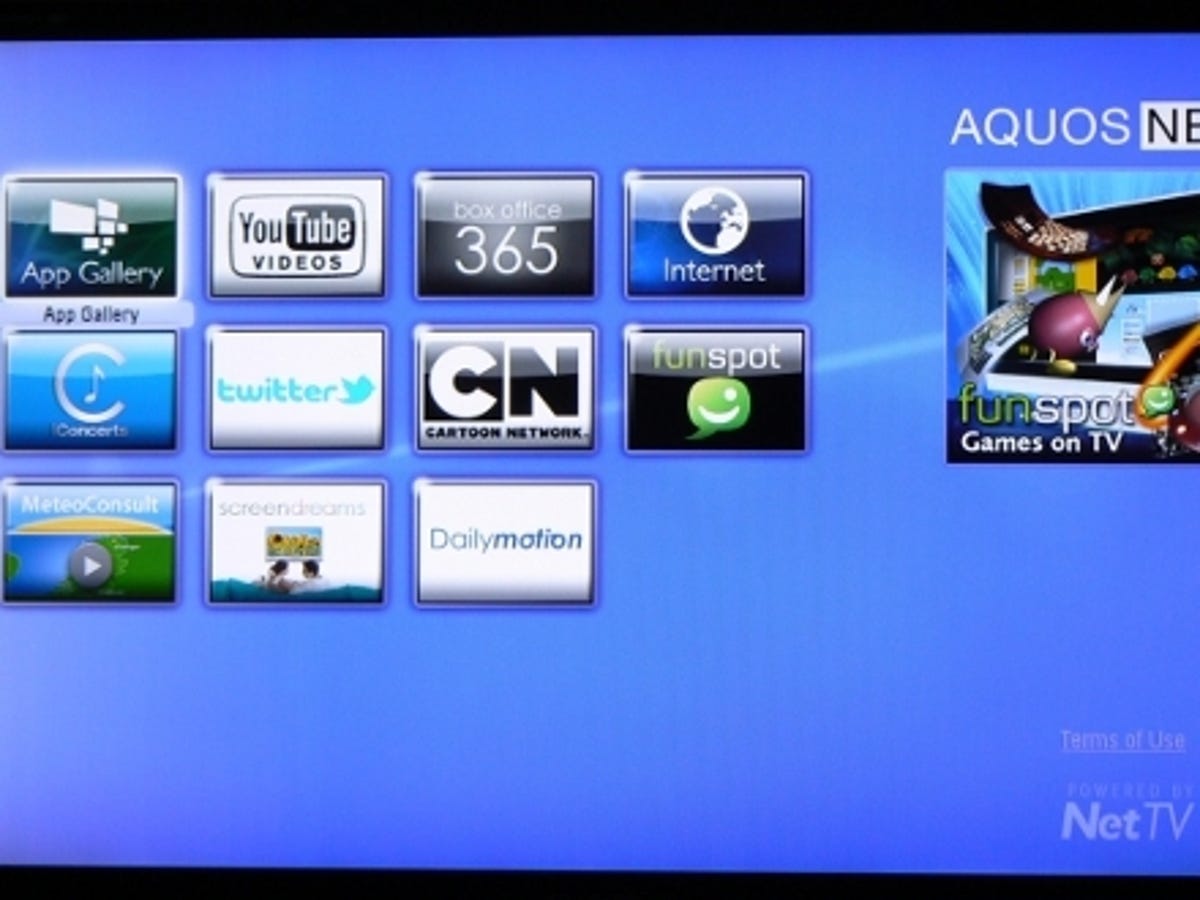 Why You Can Trust CNET
Why You Can Trust CNET Sharp Aquos LE831 (LC-40LE831E) review: Sharp Aquos LE831 (LC-40LE831E)
The Sharp Aquos LC-40LE831E LED TV has its plus points, such as its impressive 3D performance. But its 2D picture quality could be better and its Internet features lag behind the competition.
Last year, Sharp introduced its innovative Quattron LCD panels, but, in other ways, it fell behind its TV-making rivals -- its 3D models suffered from above-average levels of ghosting around images, and its sets also lacked Freeview HD tuners. The new range, to which the 3D-capable Aquos LC-40LE831E belongs, aims to change all that.
The Good
The Bad
The Bottom Line
Priced at around £900, this 40-inch, 1080p, LED-illuminated Quattron LCD TV doesn't come cheap, but does its performance justify its high price tag?
Lighting on the edge
The LC-40LE831E uses edge-mounted LED backlighting, so its chassis is pretty much as slim as they come, measuring a mere 33mm deep. It's a good-looking TV when viewed from the front too, thanks to its narrow bezel and the silver strip that runs around the outer edge of the set.
The TV's four HDMI ports are all side-mounted for easy access, while the Scart, component, VGA and composite connections are found on the rear. Sharp has also kitted the TV out with two USB ports, so there's one free if you make use of the bundled Wi-Fi adaptor. The TV comes equipped with an Ethernet port too.
Unlike last year's models, this TV has a Freeview HD tuner so you get access to hi-def services from the BBC, ITV and Channel 4.
The LC-40LE831E also features Sharp's Aquos Net line-up of Internet features. Like similar offerings from Panasonic, Samsung and Sony, it includes support for a number of Internet video services. The presentation is pretty drab, though, and navigating the menus feels more sluggish than it does on other sets.
The line-up of video services is also poor. There's no iPlayer, for example, even though pretty much every other TV manufacturer in the UK now supports it. Instead, you get the likes of YouTube and Dailymotion, along with some more obscure services, such as iConcerts, which shows videos of old music gigs.

On the social-networking front, there's only a single app, used to access Twitter. The set does have a full Internet browser, so you can visit pretty much any site on the Web, but Flash isn't supported, the browser is difficult to use via the remote, and Sharp doesn't have a smart-phone app, like Sony does, to help speed up text entry. All in all, Aquos Net is rather disappointing.
The digital-media playback features are better, however. We tried USB playback with a range of formats, including HD MKV files, as well as DivX and Xvid videos, and found the TV had no problem playing any of them. It couldn't find any video content on our network, however.
Picture this
So what about image quality? Sharp's Quattron models are so named because they use a four-color pixel structure -- yellow has been added to the existing red, green and blue pixel spectrum.
The LC-40LE831E's pictures are a mixed bag, however. Black levels are very deep, but they seem to come at the expense of shadow detail, with the result that the TV's contrast levels aren't anywhere near as subtle as those of Panasonic's Viera ST30 sets. While colours can look quite rich and lush, they can also sometimes look inaccurate, as if the set is doing too much processing to call the extra yellow in the pixel structure into play.
We noticed odd hues cropping up here and there, especially on the edges of objects and people's faces. You can reduce this problem by playing around with the comprehensive picture controls, but it seems impossible to eliminate it completely.
The TV isn't great at dealing with standard-definition sources either. Although standard-definition Freeview channels initially look quite sharp, you start to notice breakdowns in the sharpening process after a while, with jarring noise and jaggies popping up here and there.
It's a better story when it comes to 3D, though. Sharp's 3D models from last year weren't all that impressive -- they suffered from plenty of crosstalk, whereby you see ghosting on sharp edges in images in the mid and far distance. Thankfully, the company seems to have got on top of the issue with the LC-40LE831E.
This TV isn't as completely free of crosstalk as Panasonic's impressive Viera TX-L32DT30B, but you really have to look for it. As a result, 3D images are very engaging, allowing you to really soak up the extra depth on offer. The LED backlighting also helps the 3D pictures to overcome the dimming effect of the active 3D glasses.
Conclusion
The Sharp Aquos LC-40LE831E is a hit and miss affair. It offers a slick design and its 3D pictures are impressively free of crosstalk, but its 2D picture quality is average and its line-up of Internet features is poor. You can get better overall performance for a similar price elsewhere.
Edited by Charles Kloet


